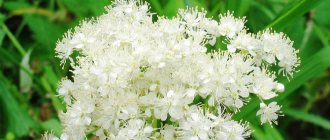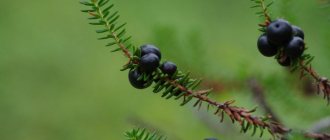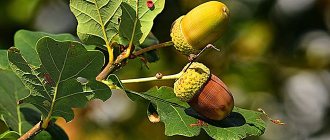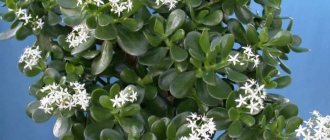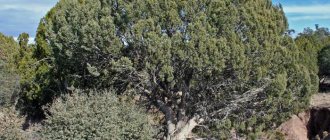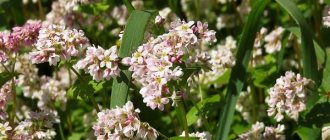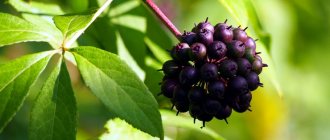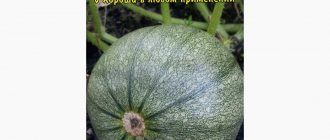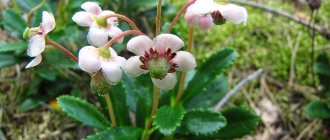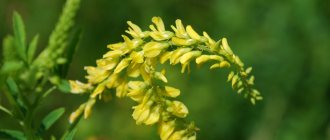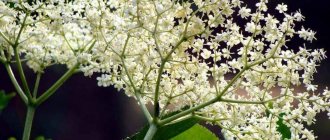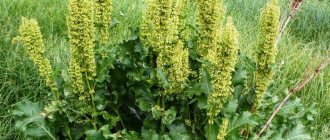Description
Rhododendron is a meter-tall, always green shrub. A crooked trunk stretches along the ground:
- Dark brown bark with fluffy, scaly gray branches.
- Emerald green oval leaves sit firmly on short petioles. The inside of the leaves is covered with dense felt.
- The color range of flowers is varied: from snow-white to the most delicate pink. No wonder the plant was called alpine tea and snow rose. The inflorescences resemble umbrellas.
- The shrub blooms in the summer months. It reproduces by seeds, which are collected in fruit-cases with opening doors.
Gardeners grow rhododendron as an exotic shrub.
Varieties
Rhododendron is a gorgeous shrub. Gardeners love it for its lush beauty. The plant will decorate any landscape. The variety of rhododendron shrubs and trees is great.
Daursky
The variety is called wild rosemary. An evergreen shrub and perennial that lives for five decades or longer. The height of the deciduous bush is 2 m. Dauria is the Far Eastern territory where wild rosemary grows, hence the name.
Daurian rhododendron blooms in spring and lasts 15 days. Then the foliage appears. The flowers are slightly pinkish, snow-white or with a lilac tint. Silicon soil, rocky slopes, oak forests are natural habitats for wild rosemary. Daurian rhododendron has long been known to Siberians, Far Eastern residents, Chinese, and Mongols.
Golden
People call rhododendron blackmane, kashkara, kashkarnik, pandarva. Shrub less than 1 m high (up to 85 cm) with creeping branches. The leaves are smooth: the outside is greener than the inside. The flowers look like large bells gathered under an umbrella. The shrub blooms in May, flowering lasts about a month. The name of the plant speaks for itself: the flowers are golden yellow. Small seeds in capsule fruits. There are a lot of seeds.
Caucasian
The name comes from the plant's habitat. The average height of the bush is just over half a meter. The shoots are creeping. The leaves are smooth, dark green on one side, pubescent with a reddish tint on the other; with thick petioles. The inflorescence consists of 8-12 yellow-white bell-shaped flowers. Flowering begins in June and lasts more than a month. There have been cases when Caucasian rhododendron bloomed more than once.
Indian
More often the plant is called Indian azalea. In nature, azalea is a shrub that produces many shoots. Small leaves are held on short petioles. The bloom is lush: pink, red, white, purple flowers. The shrub is light-loving and does not tolerate drought or high temperatures. In summer, azaleas in a pot are taken outside.
Metternich
Rhododendron is tall (1.5 m). The diameter of the crown is the same. Dark green oval leaves are leathery. Brown fluff on the inside. Blooms luxuriantly from June to July with snow-white flowers. The variety is frost-resistant, light-loving, and sensitive to soil acidity.
Cultivation, collection, storage
When growing, the shrub is placed in an area with acidic soil and good drainage. A planting hole 50 cm deep and 70-80 cm wide is filled with compost and peat. When planting, you need to familiarize yourself with the characteristics of the variety - how the plant reacts to direct sunlight, how it tolerates low temperatures. Do not plant next to plants with shallow root systems, like rose bushes. Provide good watering in hot weather.
It’s rare that a summer resident can resist planting this spectacular shrub, which is why rhododendron bushes and trees have spread throughout all summer cottage communities. Fans of the beautiful plant unite, so gardeners in the United States created the Rhododendron Association.
Leaves and flowers are collected during the flowering period from bushes that are more than two years old. Spread in a thin layer in a dark, ventilated room. Dry at a temperature not higher than 50°C; the layer is stirred during the process.
We invite you to familiarize yourself with the information about the medicinal properties and contraindications for the use of rowan. Maybe you will be interested in the valuable properties of the unusual carob tree? Although the Crimean rose, familiar to everyone, is also the owner of a huge amount of useful substances.
Drying
Leaves are picked by hand. The collected material is dried:
- in the fresh air under cover;
- in heated buildings;
- ovens;
- electric dryers.
Drying outside is allowed only in a shaded place. The leaves are not piled up, they are laid out, sometimes turned.
The electric dryer is not heated above 60 °C in order to preserve the healing qualities of the plant.
Flowers, branches, and roots are dried in the same way.
Features of plant care in the first year after planting
In the first year after planting seedlings, it is important to monitor the moderation of soil moisture. During the dry season, abundant watering is needed, but in the rainy season it is better to limit the ingress of moisture into the area around the bush.
There is no need to fertilize during the first months, since the roots are sufficiently strengthened only in the second year after planting. It is important to remember to mulch the soil and remove weeds around the rhododendron.
To prepare the seedling for wintering, you may need moisture-recharging watering, as well as shelter from coniferous branches and burlap.
The mountain species is successfully grown in garden conditions
Beneficial features
Folk recipes in the preparation of life-giving potions use 4 types of rhododendrons: Caucasian, Daurian, golden, Sagan-daylya (Adams).
Varieties are endowed with healing properties:
- bring down the temperature;
- relieve pain;
- calm down;
- are an antiseptic;
- diaphoretic.
Rhododendron successfully affects the activity of the heart muscle, drives away unnecessary fluid, removing swelling, and eliminates suffocation. Normalizes heart rate, reduces blood pressure and cholesterol.
Leaves are used to treat:
- rheumatism;
- colitis;
- cold;
- epilepsy.
Normalization of metabolic processes in the body
Medicines based on Adams rhododendron are used in the treatment of metabolic disorders. No wonder this species is called the grass that prolongs life. Buryats have long used medicinal plants in the treatment of ailments and for prevention purposes. Tincture of leaves and tea with flowers will help restore impaired metabolism.
Contraindications and side effects
In addition to pregnant and lactating women, the plant is contraindicated for allergy sufferers and people with tissue necrosis. If you self-medicate and exceed the dosage, there is a high risk of poisoning. First, the amount of saliva produced increases, profuse sweating begins, dizziness, nausea, vomiting, weakness appear, blood pressure drops, and convulsions appear.
In case of severe poisoning, a person loses coordination, heart rhythm is disturbed, and muscle weakness increases. Caucasian rhododendron helps with many ailments. But, like any medicine, it can only be taken after consulting a doctor. After all, each person needs an individual dosage and course of treatment, which only the attending physician can know, based on the history of your illness.
There are both positive and negative rumors about Caucasian rhododendron: on the one hand, it helps reduce blood pressure, treats the heart, neuralgia and many other diseases, and on the other, it contains toxic substances. The answer is obvious - you need to strictly observe the dosage and follow the advice of doctors.
Compound
Due to its chemical composition, rhododendron uniquely heals the body and treats various diseases, even those against which medications are powerless.
Vitamin C
The leaves and stems of the bush contain more vitamin C than citrus fruits.
Rhododendron medicine helps:
- cleanse the body of toxins and heavy metal compounds;
- restore vitality;
- regulate metabolism;
- accelerate tissue restoration;
- increase the body's resistance to disease;
- make the walls of blood vessels stronger.
Rutin
The flavonoid is found in rhododendron leaves. It has special healing properties:
- strengthens blood vessels;
- increases the penetration of ascorbic acid into the body, enhancing its effect;
- restores immunity;
- effective against inflammation;
- treats hypertension;
- normalizes the functioning of the adrenal glands;
- reduces the manifestation of allergic reactions;
- reduces cholesterol.
Fructose
The petals of the rhododendron bush contain fructose, one of the valuable carbohydrates. It is beneficial for the body:
- tones;
- increases the amount of glycogen in the liver;
- restores the body from fatigue;
- strengthens the immune system;
- prevents caries and diathesis in children;
- replaces glucose in diabetes mellitus;
- cleanses the liver of toxic substances.
Arbutin
Its presence in the plant imparts antiseptic power. Used in the treatment of inflammation in the bladder, since most of the arbutin from the gastrointestinal tract is removed through the kidneys and bladder.
It delays the formation of melanin in the skin, which is why the cosmetology industry uses arbutin to create whitening creams. Because of the benefits of arbutin, a dispute has flared up between scientists. Some argue that the substance promotes the growth of tumors; others refute such judgments and believe that arbutin prevents their formation. There is still no consensus, confirmed by scientific research.
Andromedotoxin
The flowers, leaves, and even nectar of the bush contain this toxic substance, a chemical compound that is essentially poison. First, andromedotoxin affects the brain, then paralyzes the entire central nervous system. May be fatal.
You should take rhododendron honey especially carefully; it is dangerous for poisoning in case of overdose.
When ingesting medicinal preparations with rhododendron, an overdose of the medicine should not be allowed. Be sure to consult a doctor and strictly follow the recommendations.
Possible harm
When using a rhododendron drink, it is very important to adhere to the recommendations for use, due to the content of andromedotoxin, which can harm the body if overdosed.
What are the dangers of an overdose of andromedotoxin?
- insomnia;
- hallucinations;
- hyperactivity;
- diarrhea;
- urinary retention;
- kidney dysfunction;
- tachycardia.
Also, rhododendron tea and tincture are contraindicated in the following cases:
- allergy;
- pregnancy;
- kidney disease;
- childhood;
- individual intolerance;
- tissue necrosis;
- lactation period;
- increased excitability;
- adolescence;
- chronic diseases.
Side effects from using the drink:
- allergy;
- dehydration;
- addiction;
- dry mouth.
Important! Be sure to consult your doctor before use.
Treatment
The leaves, flowers, branches, roots, and petioles of rhododendron have healing powers.
Leaves
They contain especially many useful substances, so the leaves are the most valuable material of the rhododendron bush. Diseases of the heart, blood vessels, rheumatism, chronic colitis, epilepsy are treated with preparations from rhododendron leaves.
Flowers
Folk recipes from flowers alleviate tachycardia, relieve swelling, venous stagnation of blood, and help with hypertension. Dahurian rhododendron flower petals taste sweet and smell aromatic. They even make jam and cut them into salads.
Traditional medicine recipes
Flowers, stems, and leaves of rhododendron are used in folk medicine in the preparation of medicinal drinks, ointments, and potions.
Recipe 1
An infusion that restores intestinal microflora. It has a detrimental effect on E. coli and salmonella. Dry material of golden rhododendron (1 tsp) is brewed with 250 ml of boiling water, wait 2 hours. Drink warm 2 or 3 times a day, a tablespoon.
Recipe 2
An analgesic that relieves muscle fatigue and strain is a decoction of golden rhododendron. Pour 0.5 g of dried leaves into an enamel pan, add 1 glass of water, place on the stove, and boil for 15 minutes. Drink 1 tbsp. l. (three times a day).
The decoction also disinfects wounds and ulcers. It can be used to gargle a sore throat; treat stomatitis, sore throat.
Recipe 3
An infusion of Caucasian rhododendron is used when sleep is disturbed, headaches, cramps, and during menopause are used to alleviate the condition. 2 g of dried leaves of the plant are brewed in a glass of boiling water. Leave for 15 minutes, filter. Treat with 1 tsp. three times a day.
Recipe 4
A tincture is made from the leaves and flowers of the Caucasian bush, which is used to treat tachycardia, shortness of breath, and hypertension. Swelling is removed. 20 g of dried flowers with leaves are poured with 1 glass of vodka. Leave in a dark place for half a month. Strain. Drink 25 drops with water at least 3 times a day.
Recipe 5
A soothing drink is made from Adams leaves. The grass (1 tsp) is poured with 1 liter of boiling water. Keep for 40 minutes in a thermos. Take no more than 1 glass per day, before meals, divided into 3 parts (three times a day).
Recipe 6
Rhododendron tea will help reduce high fever and treat colds. To prepare it, 5 g of dry herb leaves are poured with a glass of boiling water. Leave for an hour and filter. Drink 1 tbsp. l. 3 times a day.
Recipe 7
A decoction of snow rose will help relieve nervous tension, pain due to osteochondrosis, and joint pain. Dry grass leaves (5 g) are poured with water (1 l). Boil for 10 minutes. After removing from heat, leave for half an hour. Drink the decoction warm every day, 50 ml 3 times.
Recipe 8
Stomach ulcers and inflammation of the duodenum are treated with the juice of Daurian rhododendron flowers. The juice is squeezed out of the inflorescences, mixed with cream and drunk. Rhododendron tea will cure a sore throat. Tea has an antiseptic effect; it is not only drunk, but also gargled. Brew 1 tsp. a glass of boiling water, leave for an hour. Treated with 1 tbsp. l. a day 3 times. There are many more folk recipes for treating rhododendron.
What herbs can be added to azalea leaves?
Often, for better effect and faster recovery, when preparing tea, rhododendron is mixed with the following herbs:
- sweet clover;
- oregano;
- St. John's wort;
- blooming Sally;
- wild raspberry;
- lungwort;
- mint;
- agrimony;
- hawthorn flowers;
- thyme;
- sage;
- Echinacea.
Also, for a speedy recovery, along with rhododendron tea, you can drink a mixture with astragalus or lumbago. Just drink the herbs at different times.
Interesting. If a person does not have health problems, then to maintain immunity and prevent diseases, you can add 2-3 rhododendron leaves to any tea.
Those who want to grow azaleas will be interested in our publications about propagation, care, flowering, diseases and pests, as well as about the soil for the flower, planting the plant, its types and the method of growing on a trunk.
Homeopathic medicine rhododendron
When preparing a homeopathic medicine, golden rhododendron is used: fresh leaves and shoots with flower tips.
Indications for the use of Rhododendron to alleviate the condition of weather-sensitive people:
- aches in bones and joints;
- toothache;
- the appearance of edema;
- digestive disorder;
- ear and eye diseases;
- health of women during menopause.
Arthritis pain is also treated with the homeopathic remedy Rhododendron. It not only eliminates pain, relieves nervousness, mental and physical stress.
Step-by-step instructions for preparing a tea drink
To preserve the beneficial properties of the plant, it is important to prepare the drink correctly, and then we will tell you how to prepare raw materials from leaves and other parts of rhododendron, how to then brew it and what to drink tea with
Stock up on raw materials
Rhododendron leaves or dry crushed leaves and stems. Flowers will also work. Raw materials are used fresh or prepared in the following way:
- Choose plants that are two to three years old.
- Leaves, stems and flowers are collected during the flowering period.
- Place the plant parts on a clean cloth in a dry, well-ventilated place away from direct sunlight. You can dry raw materials under a canopy, in a warm room, in the open air, or in the attic. The leaves are scattered in a thin layer and stirred periodically.
- Dry until completely ready: with a slight squeeze, the flowers and leaves break easily.
- Place in a glass container and cover tightly with a lid. Store in a dark place at a temperature not exceeding +5°C. The shelf life of raw materials is two years.
Prepare ingredients and equipment
Ingredients:
- leaves: fresh - 2 pieces or dried - 4 pieces;
- hot water - 1 glass;
- milk - 1 glass.
Required equipment:
- a metal container with a lid or a kettle or thermos;
- sieve or gauze.
Brew
- Pour boiling water over the kettle.
- Place the leaves at the bottom of the container.
- Pour a glass of hot water, the temperature of which should be +80+90 °C.
- Leave for at least 10 minutes.
- Strain.
- Add warm milk.
- Bring to a boil over low heat.
- Add salt, pepper and cream to your taste.
Tea can be brewed in a thermos and steeped for 30 minutes.
Important! You need to follow the recipe exactly. In the case of using crushed leaves, it is enough to take half a teaspoon of the raw material per glass of water
You can add honey, sugar or lemon before use.
In the case of using crushed leaves, it is enough to take half a teaspoon of the raw material per glass of water. You can add honey, sugar or lemon before use.
